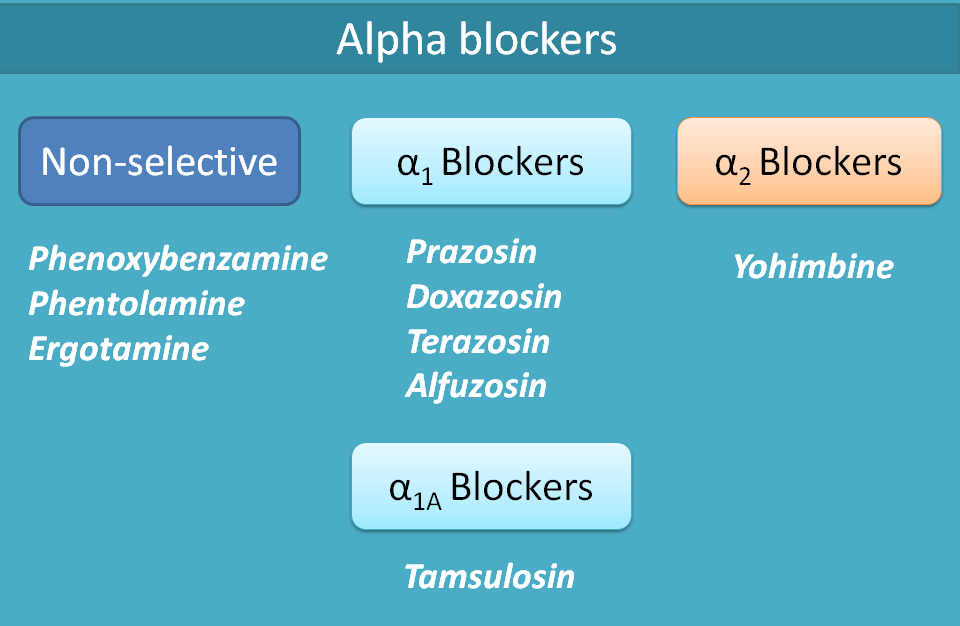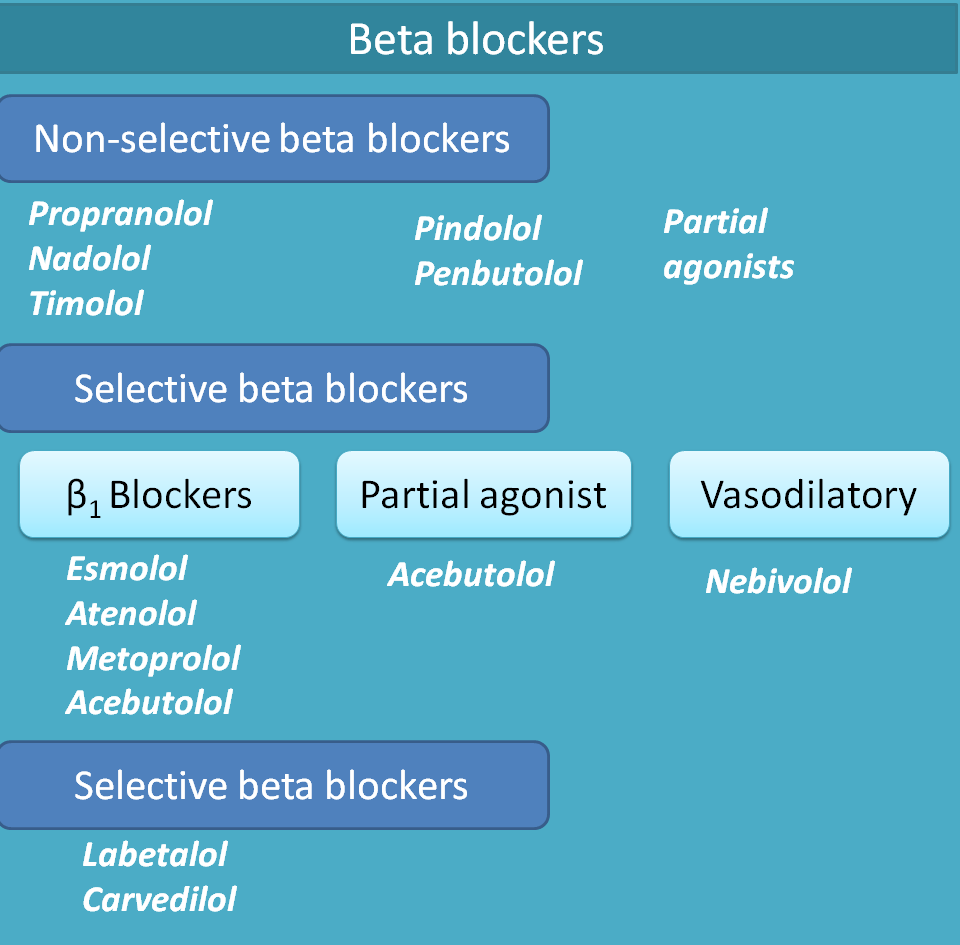Classification
Even epinephrine acts on both alpha and beta receptors, adrenergic antagonists doesn't share this broad affinity but they are somewhat more specific and act on either alpha or beta receptors. That means, those drugs that block alpha receptors have high specificity towards alpha receptors and show negligible activity on beta receptors.
Hence based on the receptor selectivity or location of action these drugs can be classified into three types.
- α-adrenergic antagonists
- β-adrenergic antagonists
- Drugs acting presynaptically
α-blockers
These agents can be further classified into two categories.
- non-selective
- selective
Non-selective α-blockers
Non-selective α-blockers are selectively act on alpha receptors but non-selective among its subtypes and act both on α1 and α2 receptors.
These drugs mainly include
- phenoxybenzamine,
- phentolamine

Ergot alkaloids like ergotamine also show non-selective alpha blocking activity but their main action is on 5-HT receptors, hence not treated as pure alpha blockers.
Selective α-blockers
Selective α-blockers mainly include α1-blockers as α2-blockers are not clinically useful due to their central effects.
Hence the main selective α1-blockers include
- Prazosin
- Doxazosin
- Terazosin
All these drugs selectively block α1 receptors leading to relaxation of smooth muscle.
Beta blockers
Beta blockers are one of widely used class of drugs in this category. They can be classified into five categories
- Non-selective beta blockers
- Selective beta 1 blockers
- Beta blockers with partial agonist activity
- Beta blockers with vasodilator activity
- Beta blockers with alpha blocker activity

Few of the drugs act presynaptically and can effect adrenergic transmission. They can effect storage, release, metabolism or uptake. As we have discussed earlier, drugs affecting storage an release only decrease adrenergic transmission, hence discussed here.
These drugs include
- Storage inhibitor
- Reserpine
- Release inhibitor
- Guanethidine